Steel Products Prices North America

Raw Materials Prices Decline Further Through July
Written by Brett Linton
July 27, 2022
Prices for all seven of the steelmaking raw materials tracked in this SMU analysis declined over the last 30 days, receding further from record-high levels seen in March and April. Through the latest data available as of July 27, coking coal prices decreased 56% compared to one month prior, pig iron and busheling scrap prices fell 20%, iron ore and zinc prices were both down 11%, shredded scrap prices declined 5%, and aluminum prices eased 2%.
Table 1 summarizes the price changes of the seven materials considered in this analysis. It reports the percentage change from one month prior, three months prior, and one year prior for each product.
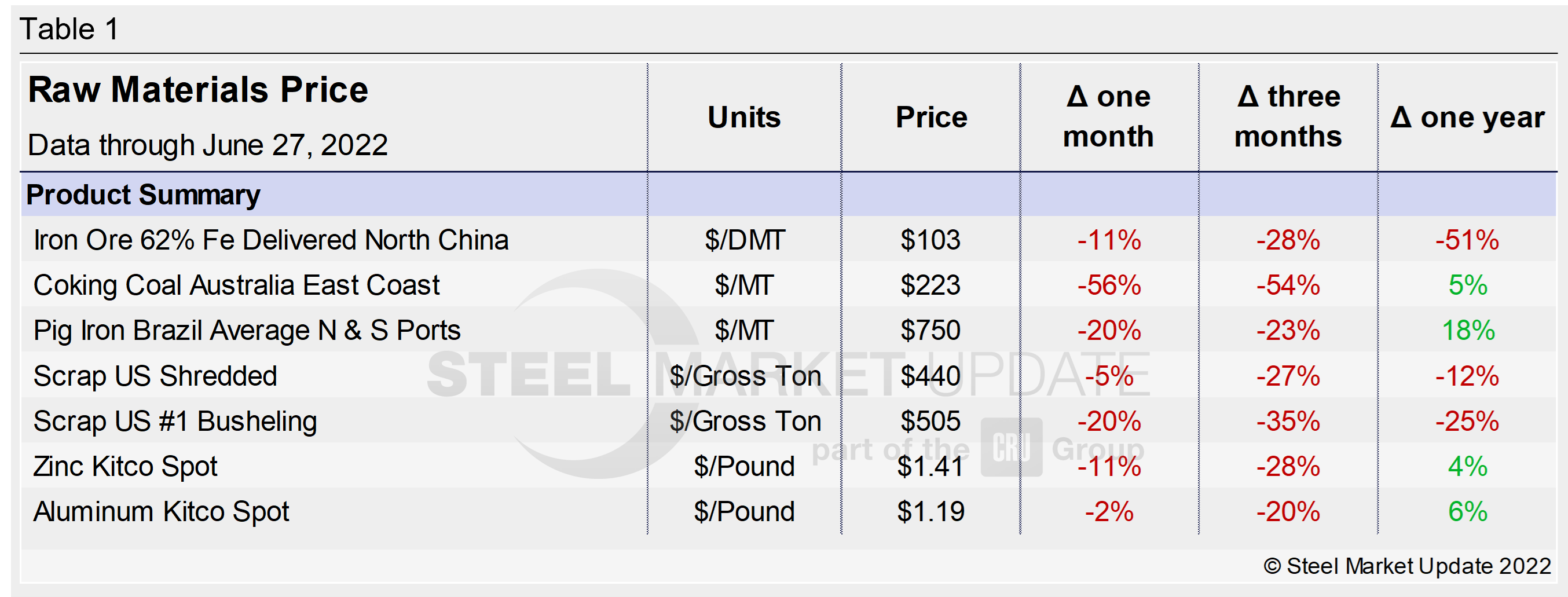
Iron Ore
After rising to record-high levels last summer, the Chinese import price of 62% Fe content iron ore fines declined to an 18-month low last November. Prices then rose through April and have declined since. Figure 1 shows the price of 62% Fe delivered North China at $103 per dry metric ton as of July 27, or roughly back to pre-covid levels. Iron ore prices have decreased 11% in the last 30 days, down 28% compared to three months prior, and down 51% from the record-high prices seen this time last year.
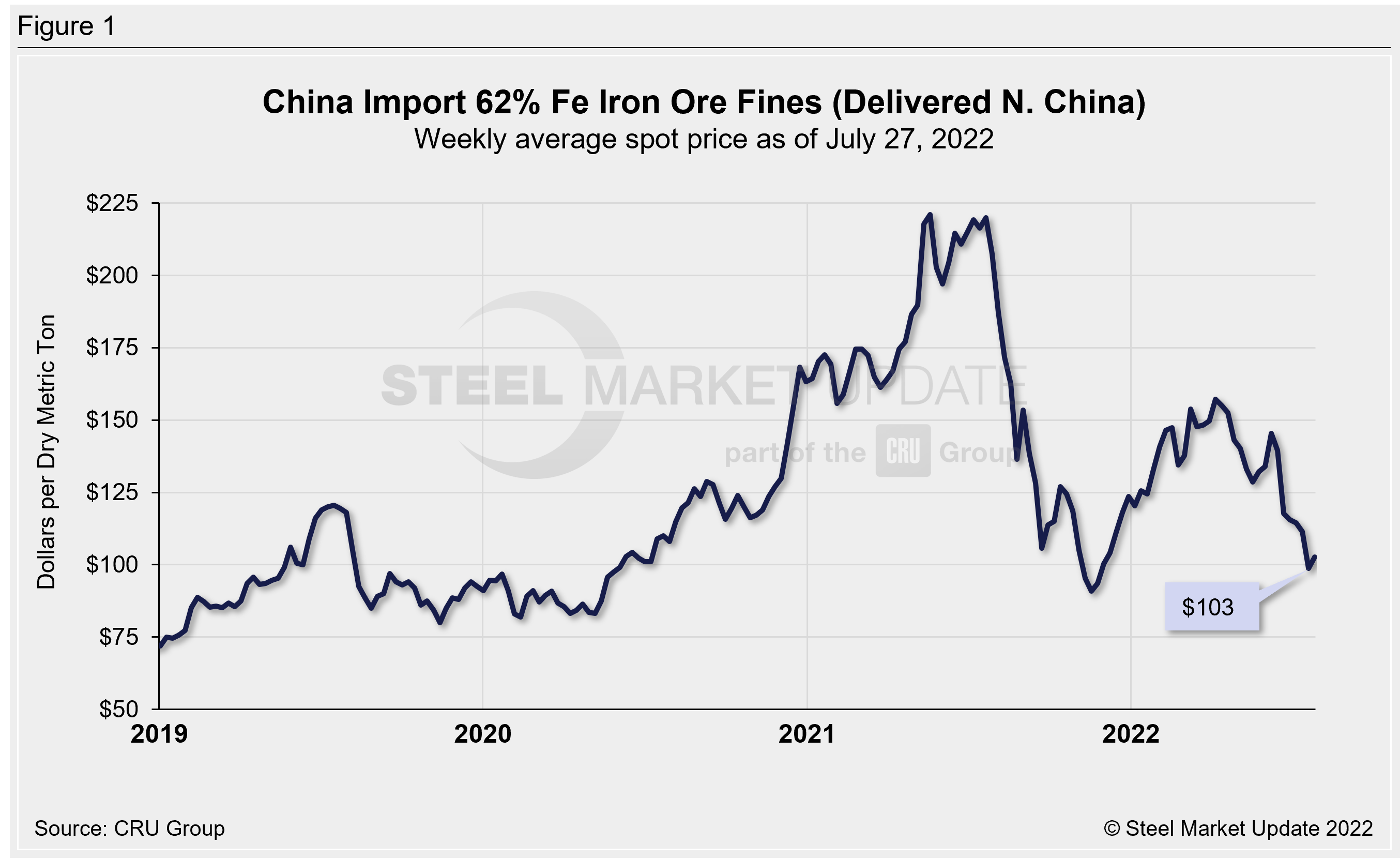
Coking Coal
The price of premium hard coking coal FOB east coast of Australia surged in March of this year to a record high of $660 per dry metric ton, with the latest prices down 66% from that peak to $223 per ton (Figure 2). Prices have fallen 56% in the last 30 days, are down 54% compared to three months prior, but are up 5% from prices one year ago. In 2021, coking coal prices reached a record-high $405 per ton in October/ November. Prior to that, the average coking coal price in 2019-2020 was $151 per ton, and the previous record for coking coal prices was $400 per ton in July 2008.
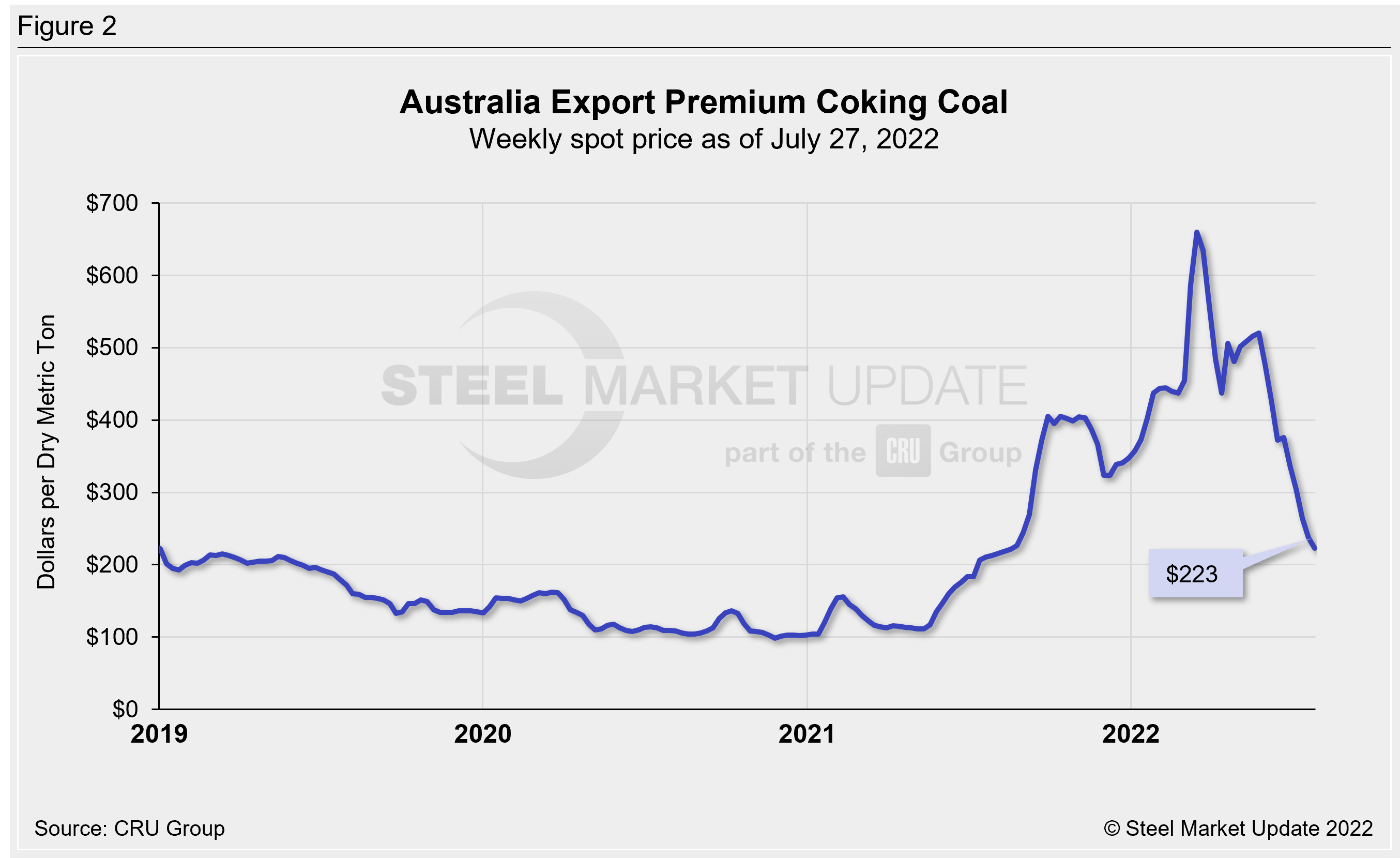
Pig Iron
Most of the pig iron imported to the US had come from Russia, Ukraine and Brazil. This report summarizes prices out of Brazil and averages the FOB value from the north and south ports. Pig iron prices had been elevated but relatively stable for most of 2021 and early 2022. Prices jumped 60% in March following the invasion of Ukraine by Russian forces – which limited or halted supplies from both nations. April saw record-high pig iron prices at $975 per metric ton. Prices in July eased 20% from June to $750 per metric ton, down 23% from three months ago, but up 18% from one year prior. Recall that pig iron prices had reached a multiyear low of $275 per metric ton in June 2020 (Figure 3).
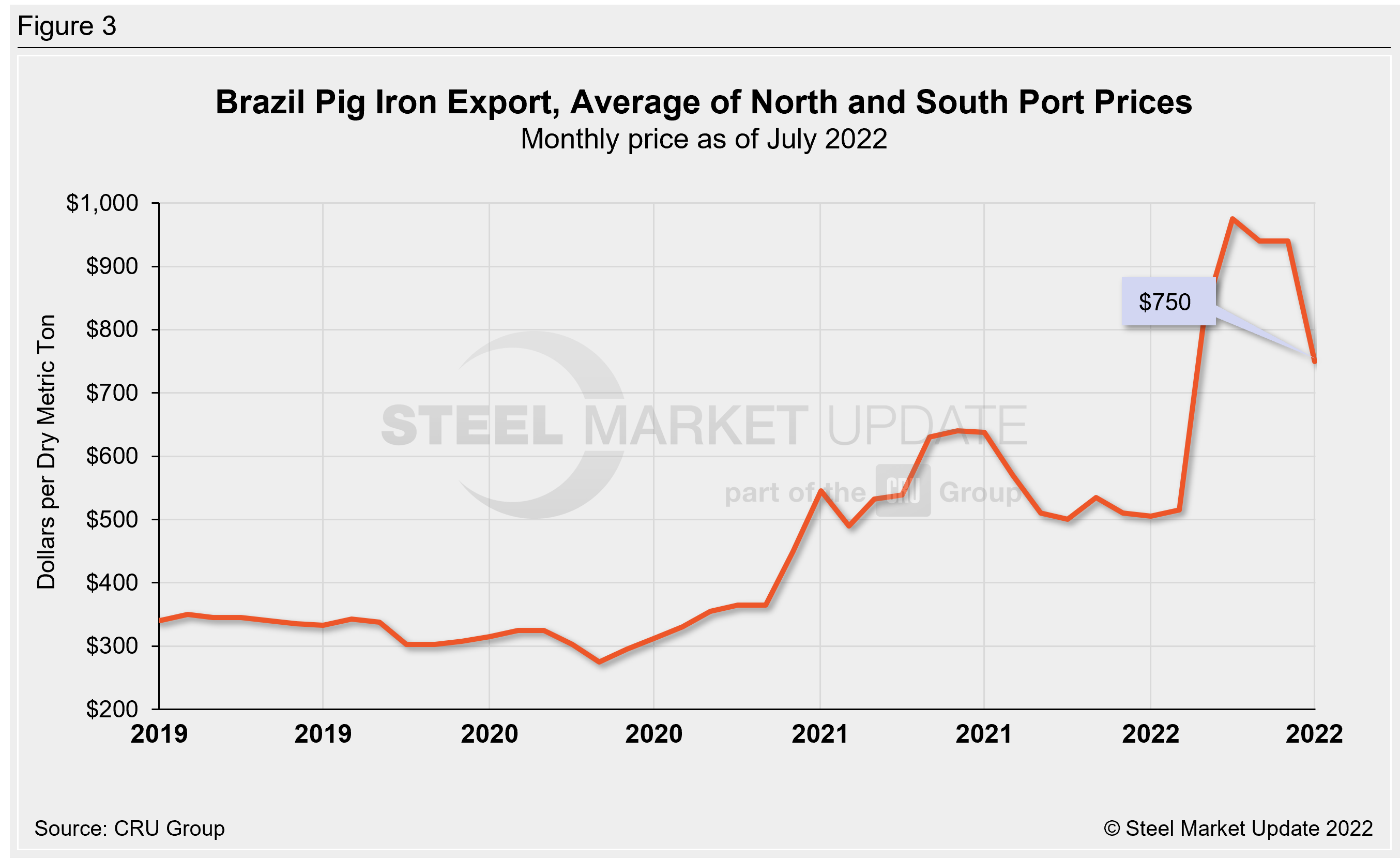
Scrap
Hot rolled steel prices fluctuate up and down with the price the mills must pay for their raw materials. Changes in the relationship between scrap and iron ore prices offer insights into the competitiveness of integrated mills, whose primary feedstock is iron ore, compared to minimills, whose primary feedstock is scrap. Figure 4 shows the spread between shredded and busheling scrap, priced in dollars per gross ton in the Great Lakes region.
Scrap prices eased further from June to July. Busheling scrap prices fell $130 per ton to $505 per gross ton, while shredded scrap prices declined $25 per ton to $440 per ton. Recall that March and April saw record-high scrap prices, with busheling reaching $775 per ton and shred hitting $600 per ton. Prior to 2021, the highest point for scrap prices over the last decade was $510 per ton for busheling in 2011 and $473 per ton for shredded in 2012.
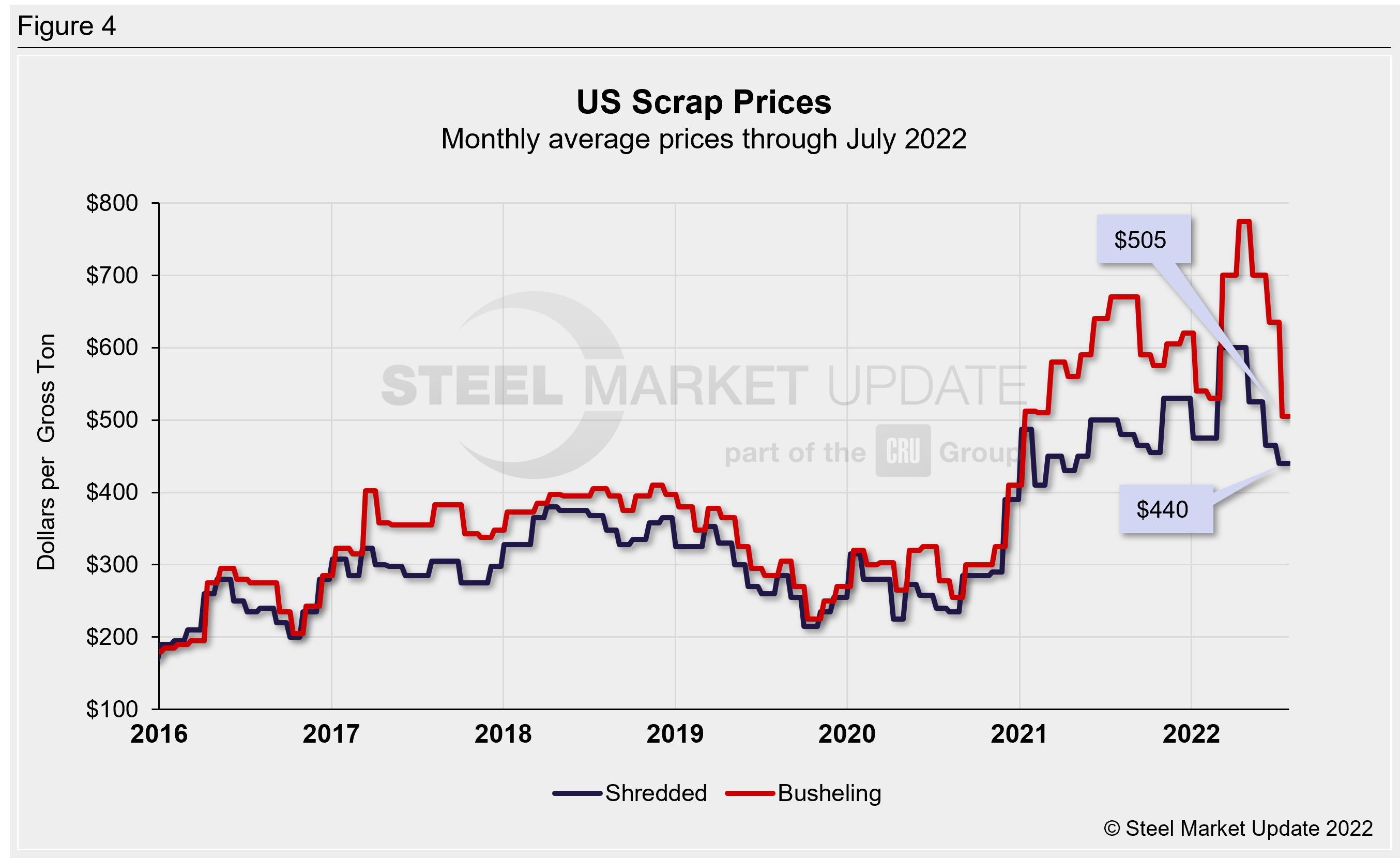
Figure 5 shows the prices of mill raw materials over the past four years. Iron ore prices are 54% below the May 2021 peak of $221 per dry metric ton, while shredded scrap prices are down 12% year over year.
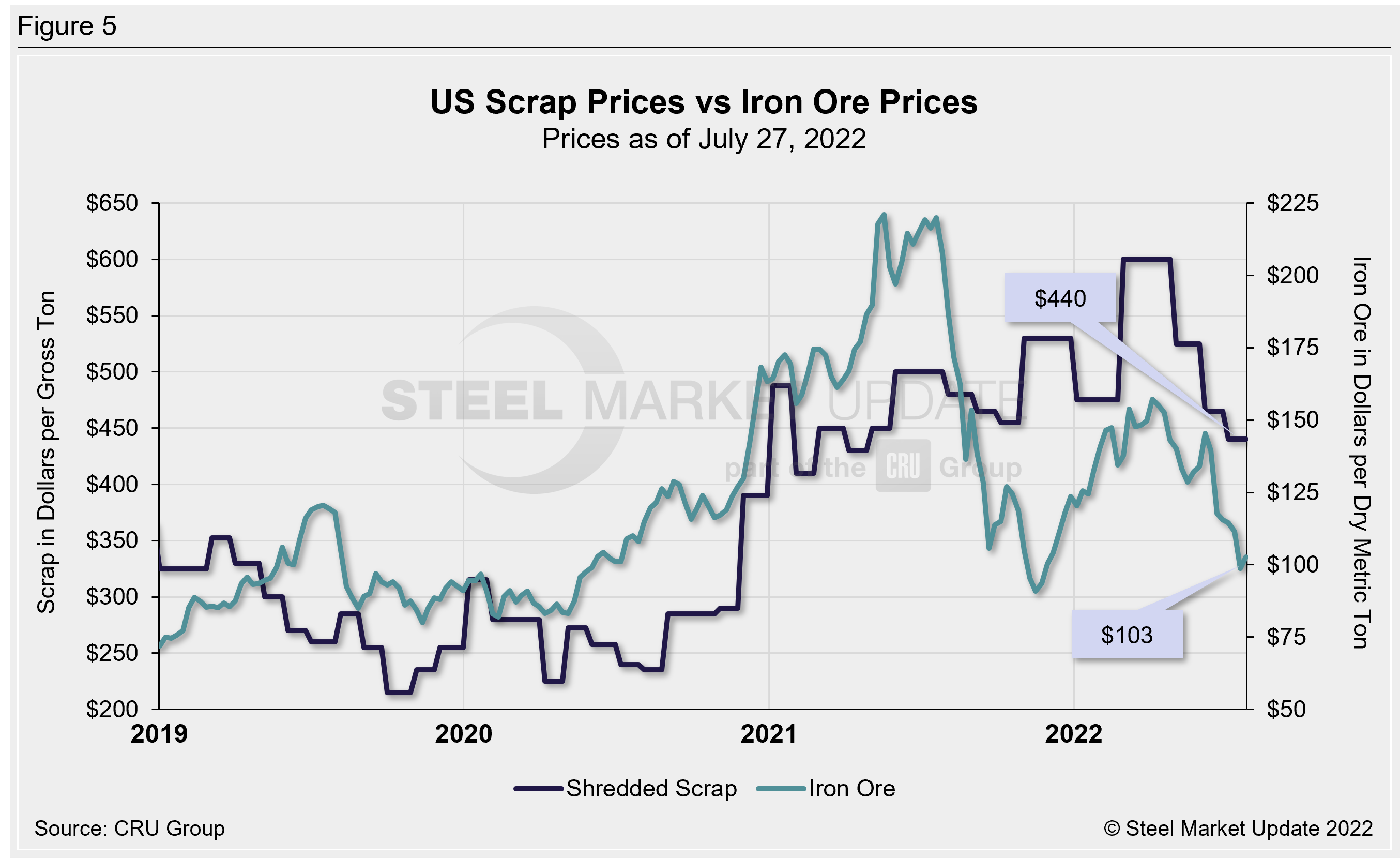
To compare the two, Steel Market Update divides the shredded scrap price by the iron ore price to calculate a ratio (Figure 6). A high ratio favors the integrated/BF producers, a lower ratio favors the minimill/EAF producers. At the current 4.28 ratio shown below, integrated producers currently hold the cost advantage and have mostly held this position since March. In November 2021 we saw a ratio of 5.84, the highest since mid-2018. The scrap to iron ore ratio reached a record low (within SMU’s 12-year data history) of 1.86 in August 2020.
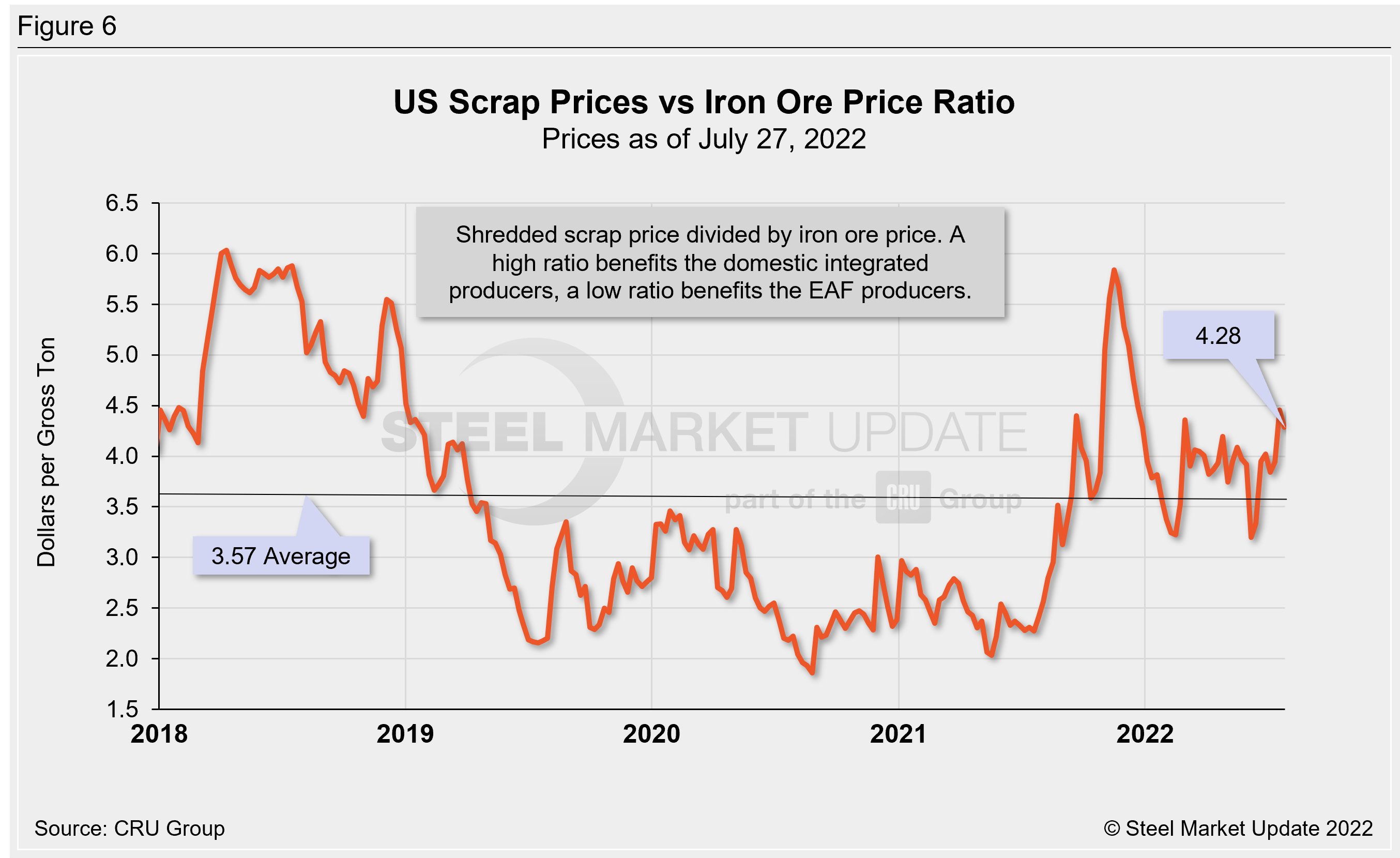
Figure 7 shows how the price of hot rolled steel generally tracks with the price of busheling scrap. Bush has declined $270 per gross ton (35%) from the April peak and is now in line with levels seen in early 2021. As of Tuesday, the SMU hot rolled price average decreased $35 per ton week over week to $840 per ton. This is a decrease of $155 per ton (16%) compared to one month ago, and down $640 per ton (43%) from the April 2022 peak.
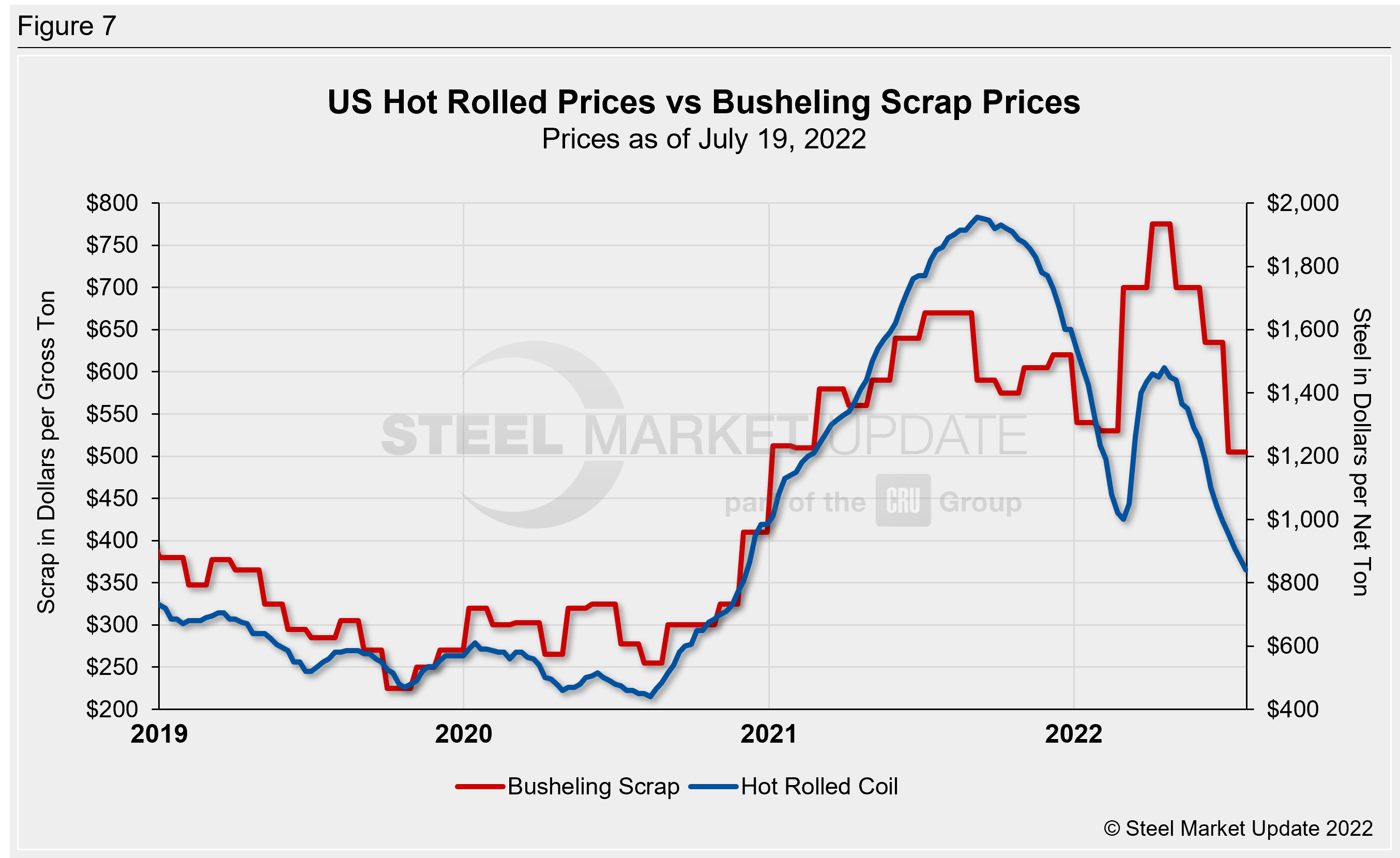
Zinc and Aluminum
Prices for zinc, used in galvanized and other coated products, rapidly increased in price in March and April, causing many mills to adjust their galvanized coating extras higher. The LME cash price for zinc surpassed $2 per pound on May 13 and peaked at $2.04 per pound as of May 21. Zinc prices have since declined, with the July 18 price falling to a ten-month low of $1.35 per pound. This decline has prompted many mills to make downward revisions to their coating extras. The latest price as of July 26 is $1.41 per pound, down 28% compared to three months prior but up 4% from levels one year ago (Figure 8).
Aluminum prices, which factor into the price of Galvalume, had also been on the rise in 2021 and into early 2022, reaching a record-high of $1.76 per pound on March 23. (Note that aluminum spot prices often have large swings and return to typical levels within a few days, as seen in the graphic below. We do not consider those surges in our overall high/low comparisons.) Aluminum prices began to decline in late March, reaching an eight-month low of $1.15 per pound on July 14. The latest LME cash price for aluminum was $1.19 as of July 26, down 32% from the March record, but up 6% from prices one year prior.
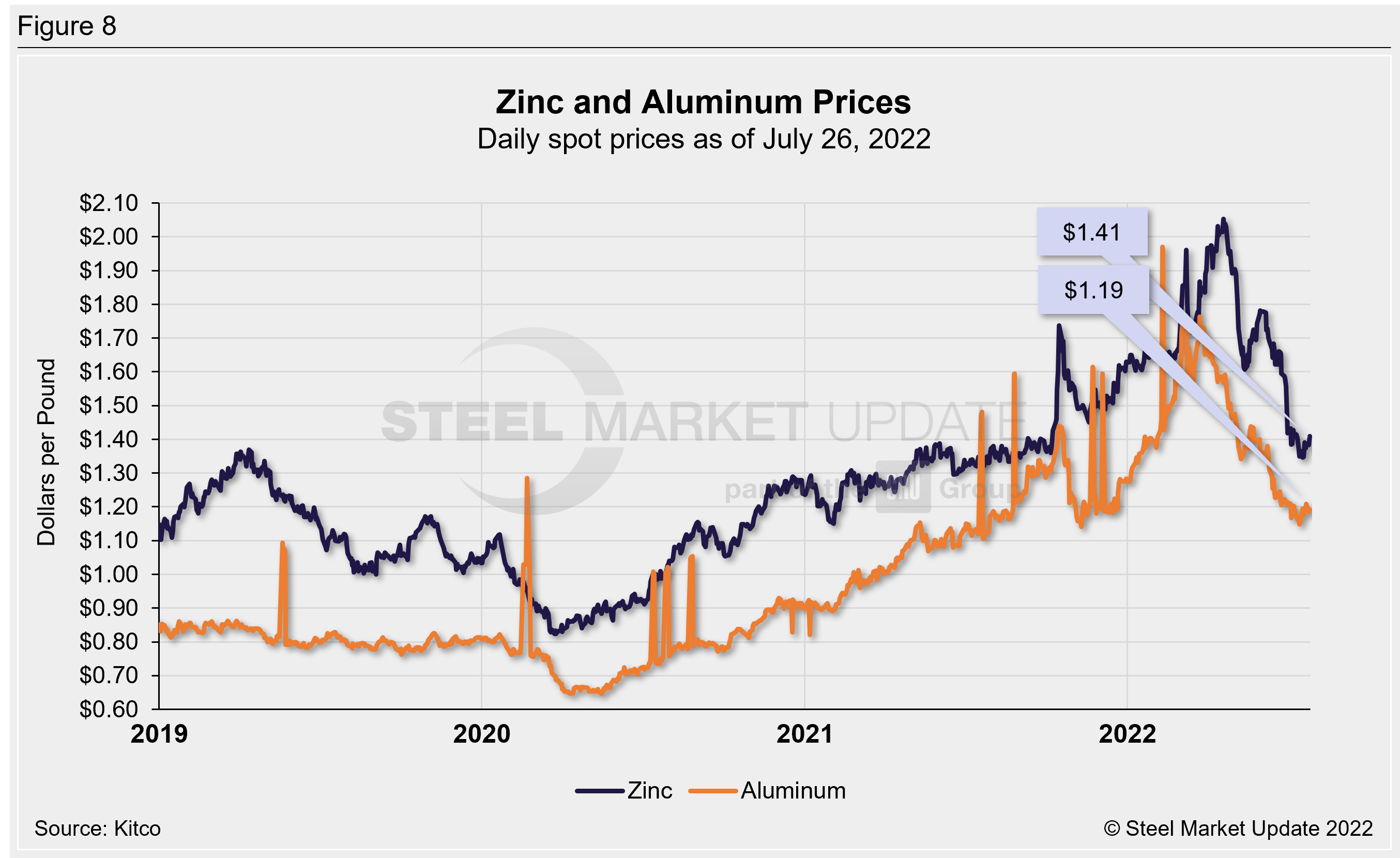
By Brett Linton, Brett@SteelMarketUpdate.com

Brett Linton
Read more from Brett LintonLatest in Steel Products Prices North America

CRU: Longs pricing trends diverge in North, South America
Most longs prices in the US were unchanged this month, except for rebar, which declined by $1.50/cwt ($30/short ton) m/m. While end-use demand is stable, inventories are well-stocked, keeping purchases limited. Domestic availability is sufficient to meet current demand, hindering the appetite for imported material. Meanwhile, prices for scrap remained under pressure in June, with […]

Nucor cuts plate prices by $125/ton, cites ongoing competition
Nucor Corp. announced that its plate mill group would cut prices for as-rolled, discrete, and normalized plate with the opening of its August order book.

Nucor cuts HR price for fourth straight week
Nucor lowered its consumer spot price (CSP) for hot-rolled (HR) coil by another $10 per short ton (st) for the first week of July. The steelmaker said in a letter to customers on Monday that its CSP base price for the week will be $670/st for all of its sheet mills with the exception of California Steel Industries (CSI).

Cliffs sets $720/ton HR price with opening of August books
Cleveland-Cliffs on Tuesday announced its monthly hot-rolled (HR) coil price of $720 per short ton (st) with the official opening of its August order book. The rate is down from last month’s price of $800/st.

CRU: Demand weakness continues to weigh on global sheet markets
Demand has remained persistently weak across the globe for sheet steel, weighing on prices. US HR coil prices fell the furthest this week as high-volume, low-priced deals were transacted as mills looked to fill order books and competed with one another amid relative demand weakness. Meanwhile, European prices were also down due to low demand […]
